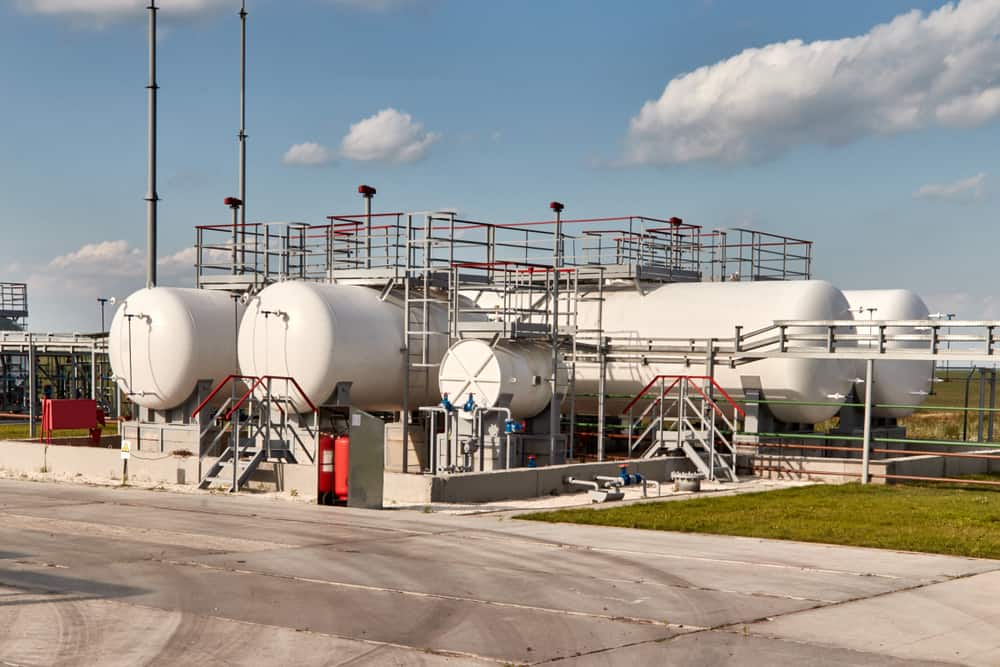
Cryogenic components enable the transport and storage of LNG, a super cold fuel with temperatures as low as -260°F. Due to these extreme conditions, careful material selection is necessary to retain cryogenic properties. Welding can present a challenge for cryogenic applications because the process can weaken joints by altering the mechanical properties of the metal.
Industry standards exist to ensure that the welding process preserves the cryogenic properties of the metal. In this article, we will discuss the relevant welding standards and the benefits of orbital welding for cryogenic LNG storage tanks and piping systems.
Challenges for Cryogenic Component in LNG Applications
The cryogenic LNG tank is double-walled, with the mid-layer acting as insulation to efficiently maintain temperature and pressure in environments subjected to sub-zero temperatures. Similarly, cryogenic piping for fuel transport and processing must also be optimized for these low temperatures. The following basic principles can allow LNG industries to address many challenges for ensuring safer operations.
- The material used in cryogenic storage and transfer systems for LNG applications will depend on the temperature to which the material will be exposed. Most metals with excellent room temperature properties may exhibit brittleness when they are subjected to sub-zero temperatures, which can result in material failure. Titanium, aluminum alloys, or nickel alloys are generally the preferred materials for the inner wall of cryogenic LNG storage tanks and pipes because they maintain toughness and ductility, even when exposed to extreme temperature and pressure conditions. As a result, these materials can enable manufacturers to prevent problems like cold embrittlement.
- Accidents resulting from pipe rupture or tank failure can be hazardous. When LNG evaporates in large amounts, overpressurization can lead to a potential explosion. Consequently, many standards recommend double-walled tanks where the outer layer provides sealing if the inner wall fails.
- A cold insulation layer can isolate the inner wall from the external environment to address drastic temperature differences between the two tank layers. For LNG storage tanks and pipes, insulation prevents heat transfer to increase efficiency.
Several industry standards outline best practices for fabricating and installing cryogenic LNG storage tanks and piping systems. Below, we’ll examine those standards in more detail.
Relevant Standards for Cryogenic LNG Storage Tanks and Pipes
Agencies such as ASME (American Society of Mechanical Engineers) and API (American Petroleum Institute) provide material recommendations for cryogenic LNG storage tanks and pipes. These agencies also describe the appropriate welding approach to ensure safer installation. The standards that include these recommendations are listed below.
- API 620 states the provision for designing and fabricating low-pressure storage tanks applicable for cryogenic LNG fuels.
- ASME VIII Division 1 and 2 provide specifications for designing single or double-walled cryogenic storage tanks, including the thickness and stresses distribution provisions.
- ASME B31.3 states the provision for process piping in cryogenic plants. As per the standards, Type 304 or 316 austenitic stainless steel can be ideal for cryogenic welding. This standard also recommends the appropriate preheating temperature for these steels.
Additionally, international agencies like ISO have also established standards, including ISO 21009 (for the design, fabrication, installation, and maintenance of cryogenic vessels) and ISO 23208 for sanitary standards.
The critical standards for LNG storage and transport systems attempt to maintain clean and stable operations. Manufacturers interested in ensuring such operations should consider the automated and controlled process of orbital welding.
Orbital Welding: The Best Option for Cryogenic Welding
Cold cracks and embrittlement can be a common cause of failure in welded joints in cryogenic components. Material choice, as guided by the standards, should resist low temperatures and stress while retaining elasticity. The welding process plays an equally important role in retaining these metallic properties. The cryogenic welding process should ensure controlled heat input, proper shielding, and consistency to ensure high-quality welds.
Orbital welding can fulfill these requirements with:
- Auto weld heads that can be programmed to produce consistent and repeatable results.
- Controlled weld parameters for accurate heat input.
- Remote monitoring that enables parameter optimization when needed.
- Weld passes that can be performed faster.
By allowing for clean and high-quality joints that can retain their properties in the extreme temperature and pressure conditions of cryogenic LNG storage systems, orbital welding increases safety and efficiency.
Arc Machines, Inc. is a leading provider of orbital welding solutions that can support critical cryogenic LNG storage tanks and pipe welding. For inquiries regarding our products, contact sales@arcmachines.com. For service inquiries, contact service@arcmachines.com. Contact us to learn more about our automated GTAW welding solutions.




